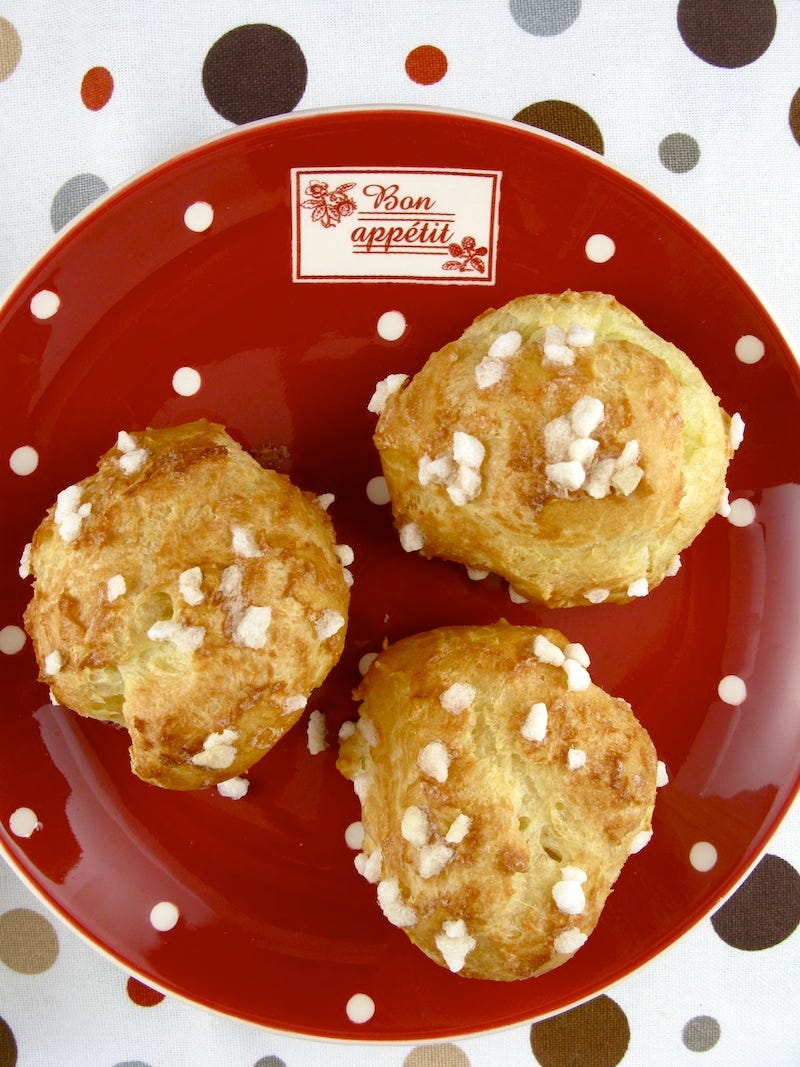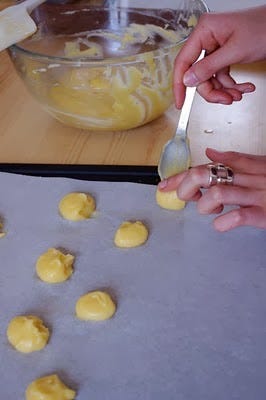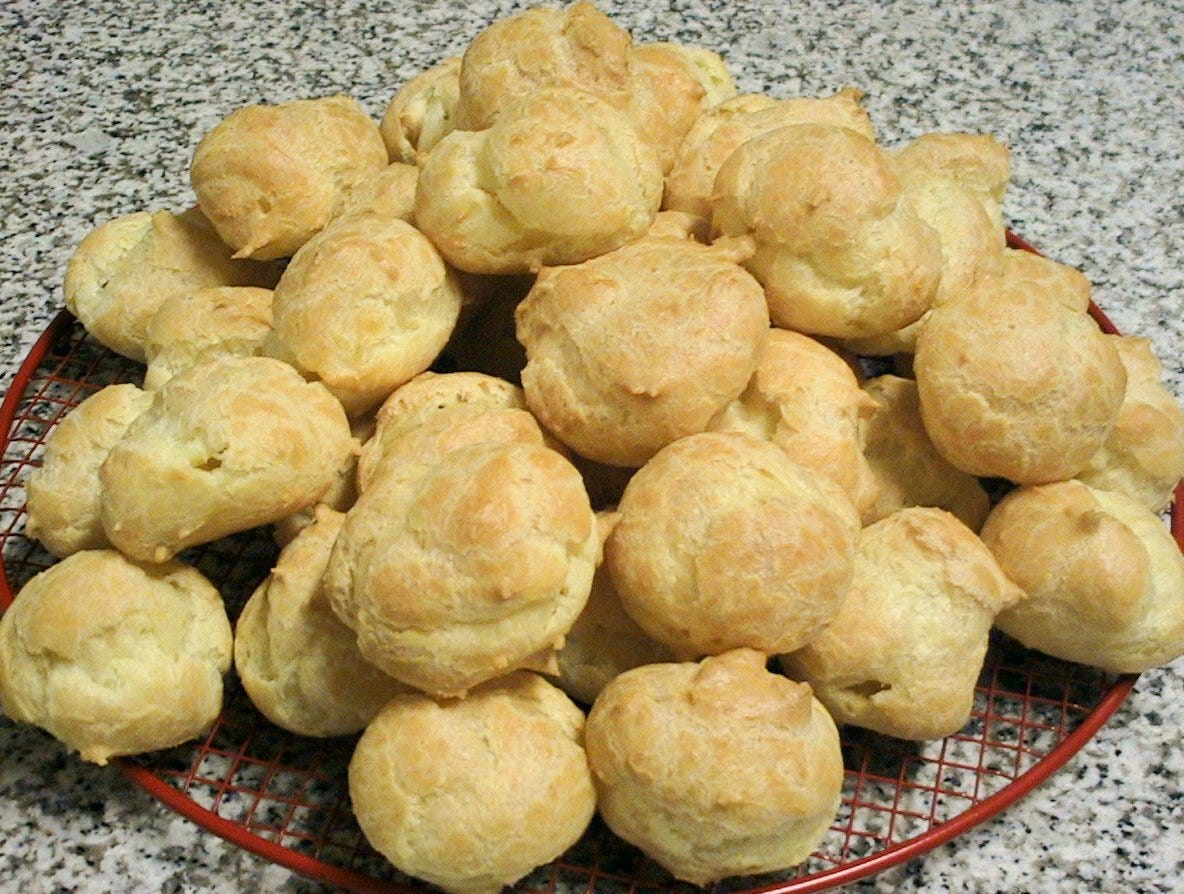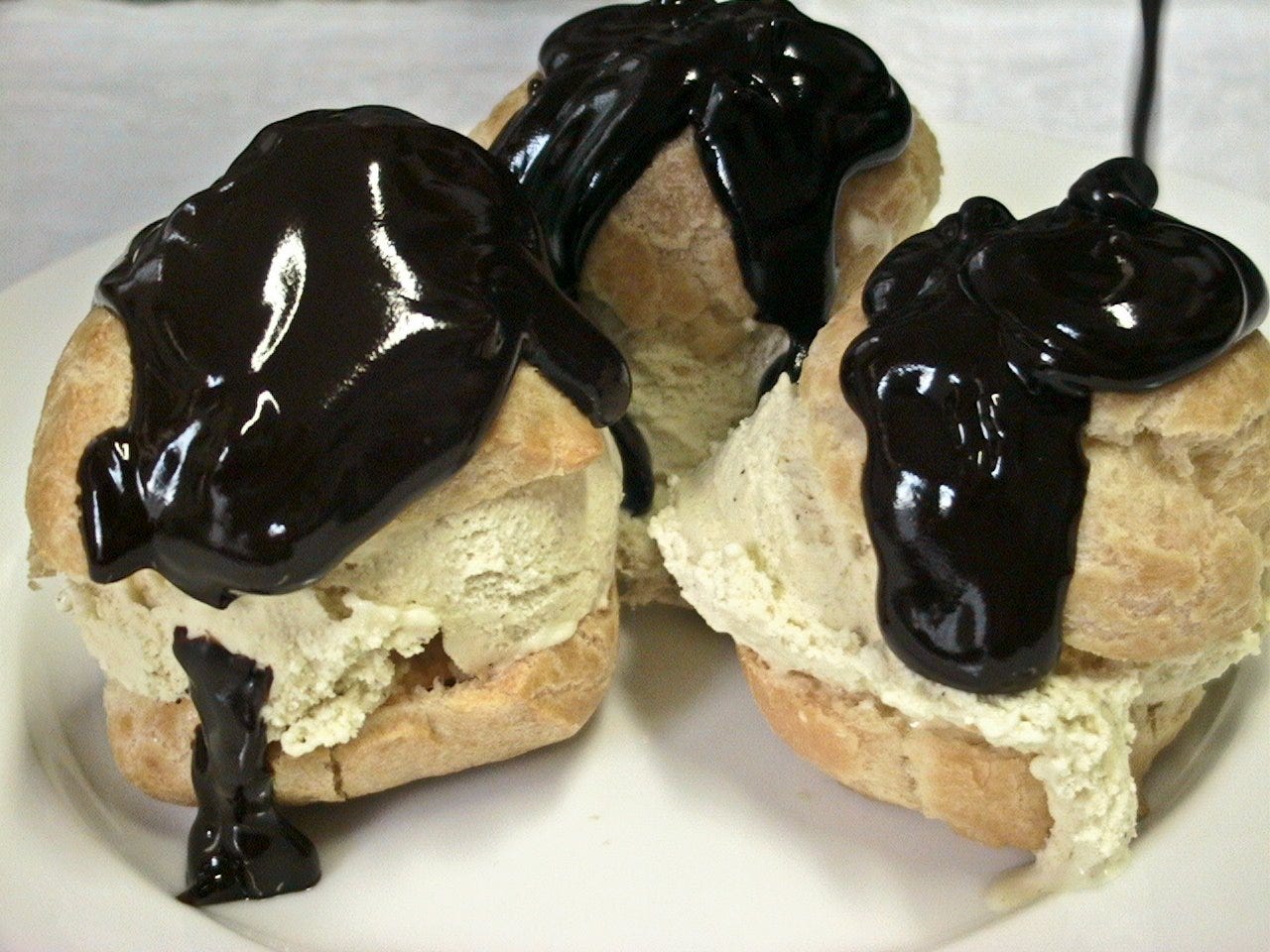Mon Petit Chou
A puffed up history
Gourmandise is an impassioned, rational, and habitual preference for all objects which flatter the sense of taste. - Brillat-Savarin
The name Pantarelli may not be as recognizable a name in the culinary history books as Carême, Vatel, Escoffier, Curnonsky, or even Urbain Dubois, and yet he is responsible for the creation of one of France’s most famed and loved pastries: the choux.
Pantarelli was pastry chef for Catherine de Medici, one of an entourage of chefs accompanying her from Italy to France upon her marriage to the future King Henri II around 1530, eventually introducing the French court to the specialties of her home country. Pantarelli developed a pâte à chaud or “hot dough”, an egg-and-liquid-rich concoction that was cooked until a paste - a cross between a batter and a dough - was formed. Whether these pastries were baked as large cakes or small individual cakes, they were given the name poupelini or popelini, often leading to confusion about the chef’s name (one will find Pantarelli referred to as Popelini). One thing is for sure, this pâte à chaud or “hot dough” was used to create a sweet dessert.
By 1566, the popelins had found their way onto the official list of pastries in the statut des pâtissiers by ordinance of Charles IX, being one of the obligatory pastries taught in the formation of pastry chefs.
Around the mid-18th century, Jean Avice, pastry chef for Talleyrand - Charles-Maurice de Talleyrand-Périgord, politician and Napoleon's chief diplomat known for his dinner parties - perfected the dough and created the choux form we are all familiar with today. The dough was renamed pâte à choux, and it is rather ambiguous whether it was due to the characteristic aspect which resembles a small cabbage (chou in French) or whether it is simply a distortion of pâte à chaud. They were commonly flavored with lemon and/or orange flower water or filled with jelly.
Avice’s student then successor Antoine Carême had the brilliant idea to fill the choux with pastry cream and whipped cream, chantilly.
Profiteroles, a plain or neutral flavored choux filled with ice cream and smothered under warm chocolate sauce, was first used to describe a dumpling-type confection filled with meat or offal to be served in soup dating back to the mid-18th century. An earlier 16th-century reference gives the name to baked balls of dough, a treat or payment - small profit - for household help - referred to by François Rabelais in his book Pantagruel in 1532. It may have its first written appearance in a cookbook in Jules Gouffé’s Le Livre de Pâtisserie in 1873. In the early editions of Larousse Gastronomique, profiteroles is used for choux puffs filled with really anything, savory or sweet, although one version given is one also found in Henri-Paul Pellaprat’s (professor at Paris’ Cordon Bleu cooking school) L'Art Culinaire Moderne of a whipped cream-filled choux covered in chocolate sauce.
As for the gougère - the cheese puff - it’s also a bit hazy when choux were first made with cheese. While the name first appears on a local festival menu in the town of Sens in 1571, it seems to have been served as a some kind of dessert. Some trace the first cheese puffs to a pastry chef named Liénard in the town of Flogny in the 19th century. Alexandre Dumas in his Grand Dictionnaire de Cuisine of 1873 has recipes for both choux - always sweet - and poupelins - a large savory puff made with cheese or lardons.
As we know, choux pastry is a cross between batter and dough, a paste thin enough to be piped or spooned into any shape one likes, thick enough to hold its shape without needing to be put into mold. At its base, it is a plain, neutral dough, neither sweet nor savory, the perfect backdrop or support for almost any - as history has shown - filling or flavoring. My own recipe is the one my father used for years and years, making saucer-sized puffs that he would fill with pudding. After he passed away, I found the recipe he had written and taped to the side of the refrigerator in my childhood home and I still have that piece of paper with me. It’s been my faithful and foolproof recipe ever since.
Pâte à choux - Choux pastry
1 cup (250 ml) water (*see note)
1/2 cup (8 Tbs, 115 g) unsalted butter
1/4 tsp salt
1 cup (200 g) flour
4 eggs
*note: you can make choux with either water, milk, or a combination of water and milk. Water allows you to bake the choux in a hotter oven or for a bit longer time without the risk of the choux overbrowning and it makes for more tender choux. Milk, with its extra proteins and sugars, gives a browned crust, making crispier choux. I prefer using all water although I will use half water/half milk if I want a firmer choux that won’t get soggy from sitting a long time filled with pastry or whipped cream, such as when I make éclairs (some prefer this for profiteroles but not me).
Preheat the oven to 375°F (190°). Grease a large cookie sheet or line it with oven-safe parchment paper.
Put the water, butter, and salt in a large saucepan over medium heat and heat, stirring, until the butter melts and the mixture comes just to a boil. Remove from the heat and add the flour all at once, stirring until well blended. Return to the heat and, using a wooden spoon, stir vigorously until the mixture forms a ball and pulls away from the sides of the pot and the flour cooks, about 3 minutes.
Scrape this ball into a large pyrex mixing bowl and, stirring, allow to cool for a minute or two. Add the eggs, one at a time, beating well after each addition (I sometimes switch to a whisk), until the mixture is smooth and creamy.
Using a teaspoon (or tablespoon for larger puffs), scoop up mounds of the dough and carefully push the dough off onto the prepared cookie sheet, using your finger or a rubber spatula. They will rise and almost double in size, so leave a space between puffs.
Bake for 35 minutes (for the small puffs) until risen and just barely golden. Working very quickly, open the oven and, with a sharp knife, make a small slit in the side of each puff to allow steam to escape - I also use this opportunity to turn my cookie sheets around back to front, as my oven heats quicker in the back - then bake them for about 5 more minutes or until golden brown.
Remove the baking sheet from the oven, and allow to cool on a rack (as I bake my puffs on sheets of parchment or oven paper, I slide the paper off of the hot cookie sheet onto the cooling rack).
These choux turn out very light and airy, moist, not hard as cardboard as we unfortunately find too often in restaurants. If you like them a dryer, just leave them longer in the oven. If you want them crisper - if you prefer dryer and crisper for cream puffs, éclairs, or profiteroles - use either half water/half milk or all milk in the recipe.
I’ve decided to share the recipe for profiteroles here, encouraged by Henry Winkler and Josh Mankiewicz, both of whom let it be known on Twitter that profiteroles are their favorites. I’ll be sharing the recipes for pastry cream and frangipane cream for cream puffs, gougères, and St. Honoré on future Substack newsletters.
Warm chocolate sauce for profiteroles
4.5 ounces (125 grams) best dark chocolate (*see note)
2 tablespoons (30 grams) unsalted butter
2 tablespoons water
*note: I have made the sauce with both Lindt chocolate at 70% cocoa and a slightly sweeter Poulain 65%. I prefer the darker 70% which gives a slightly less sweet, slightly bitter edge to the sauce which complements the sweet ice cream perfectly.
Put the chocolate, butter, and water into a small saucepan over low to medium-low heat. Stir constantly until you have a smooth, creamy sauce.
To make the profiteroles: slice your room temperature choux in half horizontally; place the bottom halves of 2 or 3 choux - ideal for each dessert serving - on an individual dessert plate and place a scoop of ice cream - vanilla is classic, but choose your favorite - on each bottom. Place the tops on each scoop of ice cream.
Spoon this very thick sauce over each individual serving of profiteroles while still hot or very warm just as you serve them. If you make the chocolate sauce a little ahead of time and it cools down before serving, just warm it up, stirring all the while.
Chouquettes
To create the chouquettes, generously sprinkle the top of each unbaked mound of choux pastry dough with sucre en grains or large-grained pearl sugar. For a more golden and slightly crispy top, lightly brush the top of each mound of dough with beaten egg before sprinkling on the sugar. Bake as for plain choux.
Thank you for subscribing to my Substack, Jamie Schler’s Newsletter, where I share my (mostly French) recipes, my hotel and my jams, my projects, and the stories of my life. You can support my work by sharing the link to my Substack with your friends, family, and your social media followers. I’m so glad that you’re here.









The history behind the recipes makes it even better. I love how you share your knowledge and experience. Thank you.
Not only do I enjoy your recipes, I love the accompanying history lesson.
Thank you.